Affiliate links on Android Authority may earn us a commission. Learn more.
MediaTek alludes to a future full with smarter mobiles
Published onOctober 16, 2015
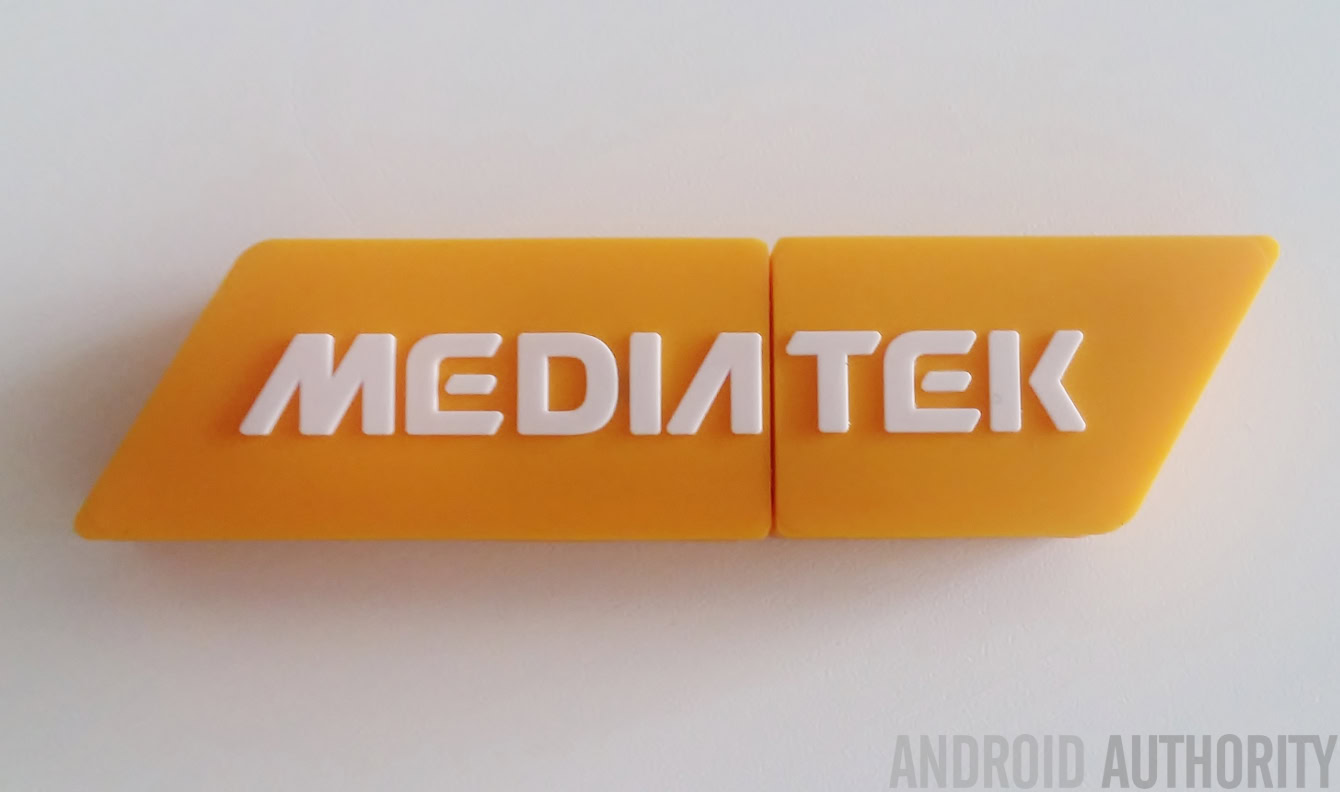
Battery life, visual processing and 5G
Looking at the more immediate future for the minute, MediaTek is looking to improve the energy efficiency of its products and move into new imaging and visual technologies. This can already be seen through innovative processor development ideas using ARM’s big.LITTLE technology and image processing enhancements through its Imagiq suite. A focus on power efficiency is no doubt keen to please end users too, especially when we look at the increasing power consumption from technologies like faster processors and higher resolution displays.
Not only that, but MediaTek is looking to boost development in lower power Internet of Things (IoT) devices and Deep Learning heterogeneous compute ideas. Deep Learning is looking to bring new learning capabilities to mobile, including object and speech recognition. For a closer look at what ideas like Deep Learning could mean for the future of mobile products, check out the article below.
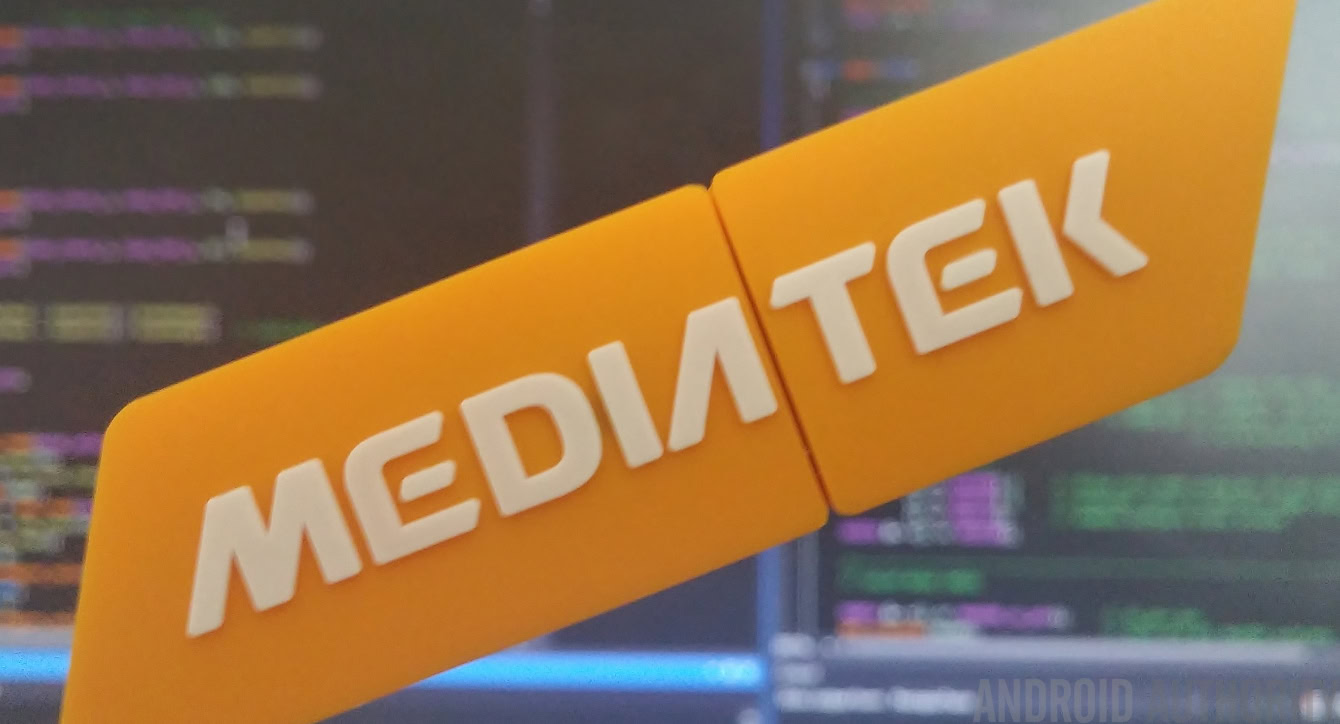
In terms of mobile devices, MediaTek is still primarily after the “super-mid” tier of the market and is expecting growth in disposable income to drive further demand in this segment of the market and bring additional consumers online. As this is where MediaTek’s see most consumers coming online, it seems logical to focus on bringing advanced connection technologies to these markets, rather than just the very high-end.
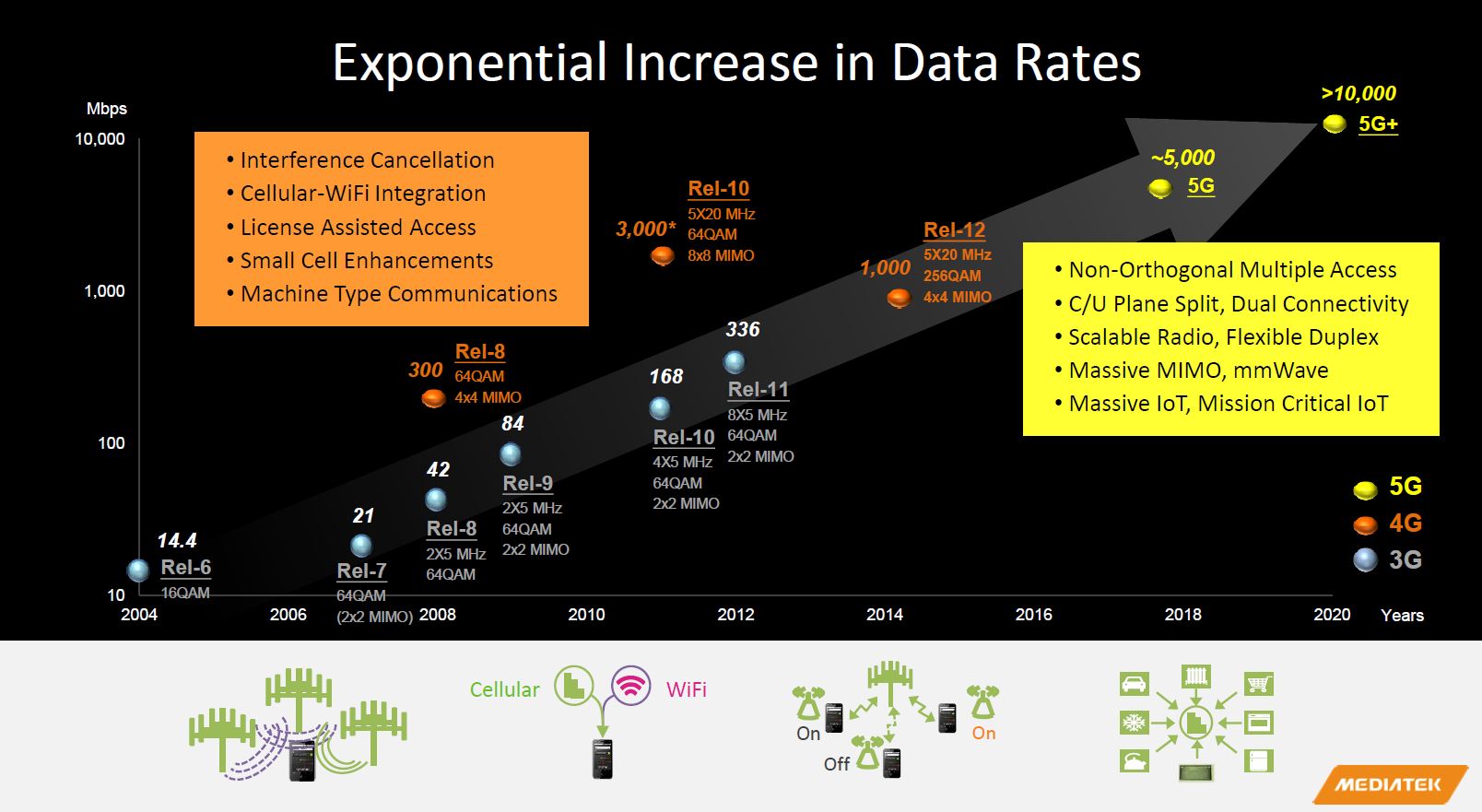
Although still a little way off, MediaTek is also preparing for the arrival of faster 5G mobile networks. This year MediaTek has its Category 6 LTE modem with carrier aggregation ready and will be moving up to Cat10/11 speeds next year. The first 5G network trials aren’t expected to start up until 2018 at the earliest, but the company is determined not to be caught behind next time around.
Unified devices
All of these ideas tie together with MediaTek’s vision for a more connected future and the company has some pretty ambitious sounding plans for what future products may be like.
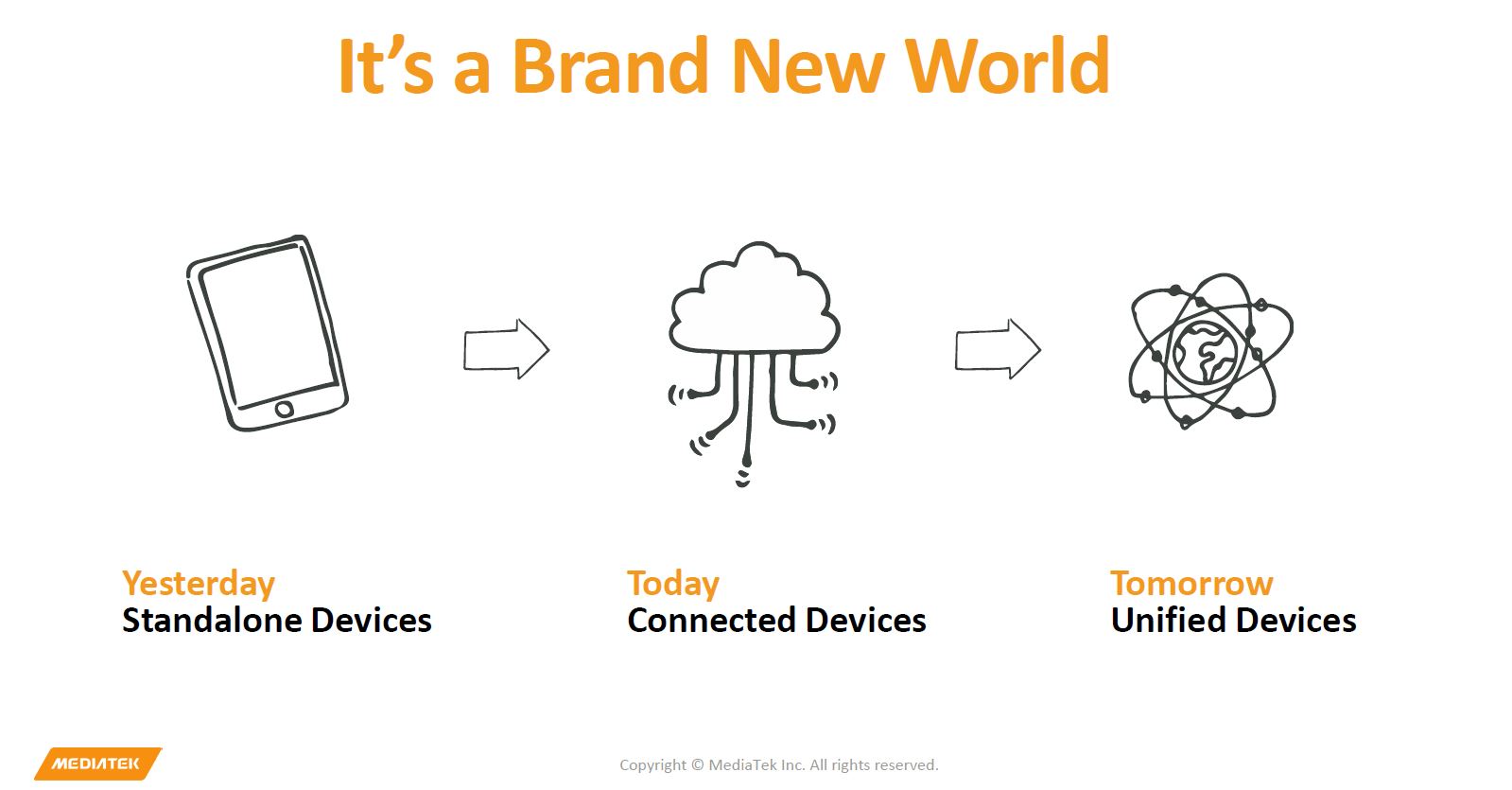
Independently, MediaTek talks about ideas like ambient computing, cloud computing and deep learning, which may be terms that you’re familiar with. When combined though, this could create a situation where multiple bits of hardware can act together as one more capable device, by sharing software and hardware resources to perform new tasks. Data could be collected on one platform, uploaded and processed by another and then sent to your phone for you to make use of.
We’ve already seen the start of this with company’s like Nest, but there are many more consumer electronics categories that could be integrated into smart systems. Wearables and even automobiles could learn to talk to one another. This could have a wide range of useful applications for business too, from food and farming to health and energy markets.
Idea’s like MediaTek CrossMount, which allow supported consumer gadgets to interact with each other’s hardware, such as microphones, is already on the way to realising this type of unification across devices. Broad access to blazing fast 5G networks and lower power hardware could allow for this type of technology not only to be smarter and faster, but also to escape the living room and reach out into the wider world.
[related_videos title=”MediaTek powered phones:” align=”center” type=”custom” videos=”640394,631702,634850″]
The big focus seems to be on better connectivity, allowing for seemingly simple low powered devices to have access to complex data that was previously unavailable. If this sounds a lot like the promised made by the Internet of Things idea, well then you’d be right. MediaTek is also making advancements in this area too.
MediaTek Labs is the company’s free to use development portal which offers developers access to the company’s SDKs and reference designs. MediaTek also recently launched its IoT starter kit designed for developers and hobbyists, which is powered by Amazon Web Services for pull and send data to the web. The kit includes the MediaTek LinkIt ONE development board, which works with the popular Arduino IDE, and a range of Grove sensors from Seeed Studio.
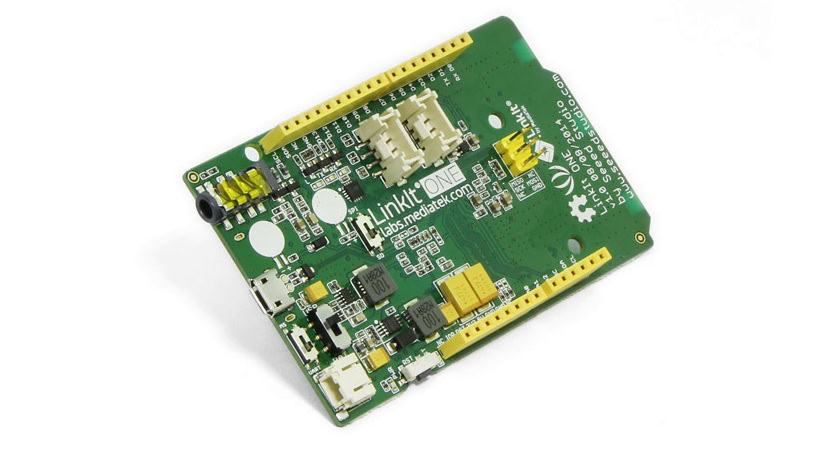
While little Internet of Things devices may not be that exciting on their own, extra connectivity and faster networking that will accompany IoT expansions could lead to much smarter products sitting in our pockets. Come 2020, we could be looking at some really smart smartphones.
Although MediaTek may not be as prolific in Western devices as it is in the East, the company has a growing list of devices and customers, along with an ecosystem looking to expand into new product ideas. It’s certainly a company we’ll be hearing more about in the coming years.